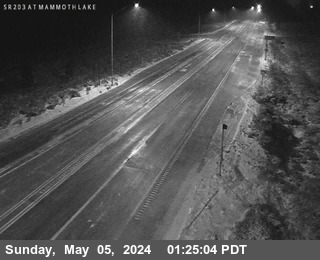Brought to you by Howard Sheckter
Another rainless week ahead with above normal temperatures through Thursday…Then Breezy and not a warm into the following weekend……Some interesting changes coming up the end of the month….
Saturday August 15, 2015
Its official!
The Nino 3.4 region is now +2.C !!
We Officially have a Very Strong El Nino for the past week
Walker Fire Update #5 8-19-2015 8 AM
Incident: Walker Fire Wildfire
Lee Vining, CA: Burning approximately two miles southwest of Lee Vining the Walker Fire remains at 3,715 acres. This is a human-caused fire that is still under investigation.
Crews continue to improve containment lines and begin mop up in certain areas of the fire. Mop up efforts also continue on the 65-acre spot fire.
Tioga Pass (Highway120) is open without an escort. However, there will be no stopping along the eastern six miles of the road. This will be strictly enforced. The fire remains active to the south of the road and this is essential for firefighter and public safety.
The fire is burning in mixed conifer, mahogany, and brush. Critical sage grouse habitat is also threatened. Visitors and residents should expect to see smoke from the June Lake and Lee Vining areas and along Highway 395.
Closures and Evacuations:
- Walker Lake “Fishing Camp” has been evacuated.
- A CodeRed Emergency Alert notice has been issued for Lee Vining and everything north of Double Eagle in June Lake (including Silver Lake and Grant Lake areas) for potential evacuations.
- Campgrounds in the Lower Lee Vining Canyon have been evacuated and are closed, including Lower Lee Vining, Moraine, Boulder, Aspen Grove, and Big Bend Campgrounds.
- Law Enforcement will be escorting campers into the Lower Lee Vining Canyon campgrounds to collect any gear left behind during evacuations. Escorts will run from 9:00 a.m. to 3:00 p.m. today. Affected campers will be allowed in with escort only. Campers are asked to meet Law Enforcement on Hwy 120 at Vista Point Drive. If an officer is not there, please wait patiently at the three cones.
- The Walker Lake Road (1N17), the Parker Lake Rd. (1S25), the Upper Horse Meadows Rd. (1N16), and the Gibbs Road (1N18) are closed for fire operations and public safety. All of these roads are accessed via the northern end of the June Lake Loop. All spur roads off of these roads are also closed. The trail to Mono Pass (trailhead is at Walker Lake) is closed.
Approximately 484 firefighters are on scene as well as numerous aircraft, dozers, and engines. Resources from Mono County, local fire departments, Cal Fire, neighboring forests, BLM Bishop Field Office, and the Mono County Sheriff’s Office are assigned. For more information on the Walker Fire you can go to the following sites: Inciweb: http://inciweb.nwcg.gov/incident/4515/
Saturdays Weather:
High temps are on the upswing after yesterdays upper trof ejection through the Eastern NW. The continental upper high expansion westward will bring some of the warmest temps so far this Summer. The pattern shift with the continental upper high moving west usually brings thunderstorms to the high country. However, this time it is centered too far to the south and thus a WSW upper flow continues. In that heights are higher, temps will be too. This pattern is likely to continue through Friday….some cooling is expected over the weekend, but temps to continue above normal.
Looking beyond Friday, amplification will developing over the pacific with retrogression as well. A series of short waves will bring welcome relief to the parched pacific northwest The Dweebs even see some snow in the outlook for the Canadian Rockies during week 2. It’s time as Fall usually sets into Canada by mid to late August. However, for Mammoth another surge westward of continental high pressure may bump up temps again that following week.
The Late August/September surprise is still in the cards as retrogression of the long wave pattern may continue, offering more trofing developing further west. This looks possible the end of the month and into 1st week of September. Additionally, if the timing is right the eastern pacific trof may pick up a wandering hurricane as well. This will be the focus the end of the month into the first week of September.
PS: The ski season of the 97/98 El Nino began in early/mid October. Lift’s opened by Mid October…….. A Redux is a possible….
El Nino News:
3rd strong down welling phase of Kelvin Wave since last March is currently reinforcing the Nino Basin.
Todays daily contribution to the SOI (southern oscillation index) calculation is -31.74 which is quite strong. Thus westerly wind bursts continue along the Equatorial Central Pacific.
The current mid August strength of El Nino is comparable to 1997 at this time.
Warm Blob in the Gulf of Alaska is showing signs of cooling.
1. The Blob of Warmth was a contributor to the dry winter of 2015. It assisted in delivering cold to the mid west and east. The Dweebs said contributor not the reason. Other teleconnecting issues like a positive AMO earlier this year blocked up the Western Atlantic and helped contain the cold over the east. With the warm Gulf of AK Blob cooling, and the AMO trending negative (less west Atlantic blocking) and possibly the +PDO weakening in the Fall…The stage should be set for the wet!
I. More thoughts and considerations…..
With all this talk and chatter in the news and else ware about El Nino, this is probably the most important and covered El Nino in the media of all time.
Reasons?
a. Social Media
b. California’s severe drought and its effects upon an increased population relative to existing water supplies
c. An event of this magnitude is associated with the informational resources via the internet, in both a scientific way and in a way for the general public to understand.
II Other thought’s
Q. What does this particular El Nino Mean as a value in long range climate prediction on the scale of the next 12 months?
A. This particular El Nino (Type 1) has got a signal that makes it easier at a longer distance of time to predict future weather events for Southern California. Hence, the stronger the El Nino, the stronger the signal. The stronger the signal the higher the likelihood of a wetter than normal winter for Southern California and possibly points northward as well.
Q. Do you need to have “this” strong (Type one) of an El Nino signal for a Wet California Winter?
A. No….. As a case in point, according to the records of DWP, since the late 1940s, the Winter of 1968/1969 was the wettest winter at Mammoth Pass. Coincidently, that winter was just barely a Moderate El Nino. So you can get very wet Winters in the Southern Sierra without such a strong signal. The main point is that the stronger signal is only beneficial for increasing the odds in the game for prediction for a wet winter, not the wettest winter on record.
1. In Mammoth Lakes, the winter of *1983, (type I El Nino) was a wetter winter than the all time strongest recorded El Nino of 1997/98 event for water content up on Mammoth Pass *(90) inches. So another point is….In the event that this turns out to be a stronger event than 1997/98, does not necessarily mean a wetter winter than the winter of 1969 or 1983, just because the signal is stronger.
Dr Howard and the Dweebs………………….:-)




